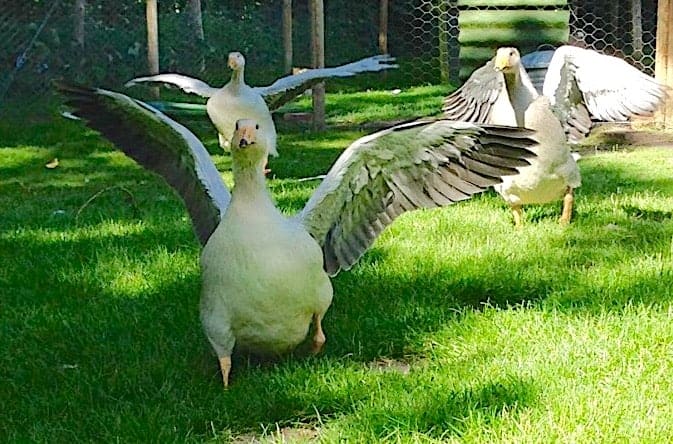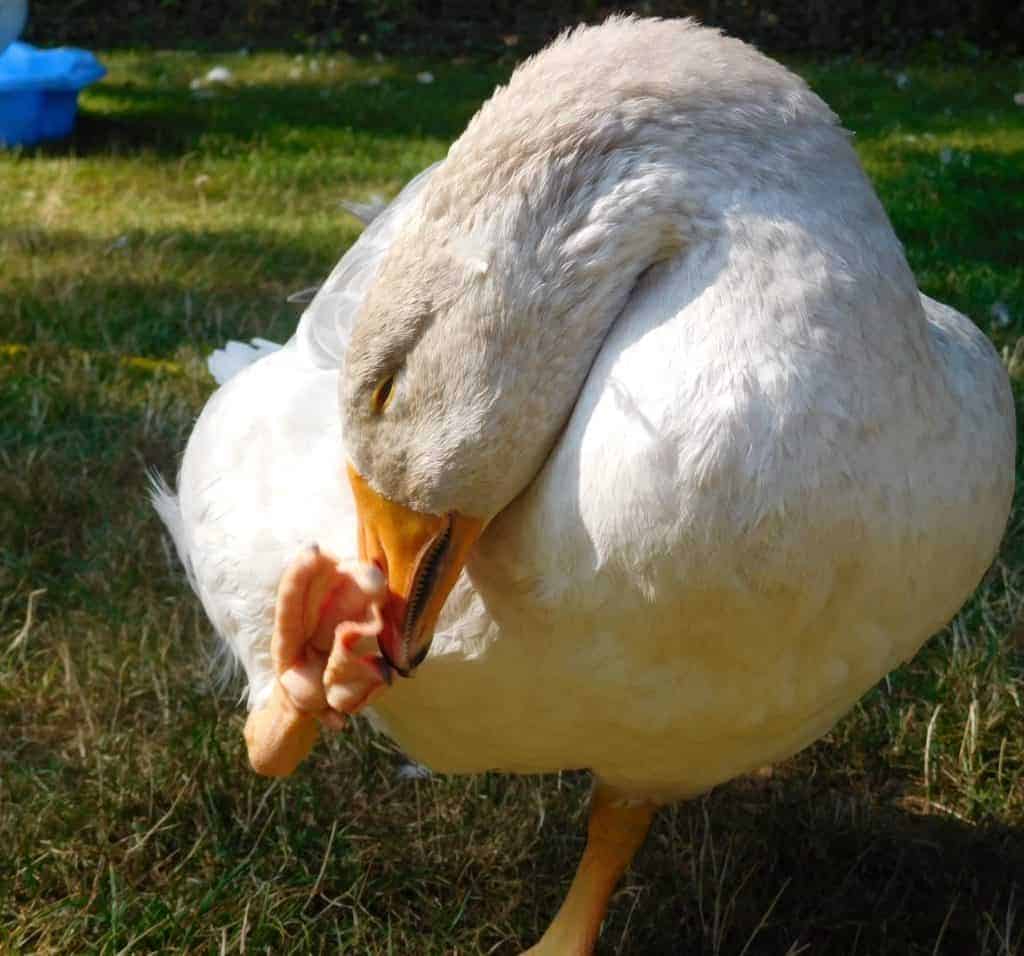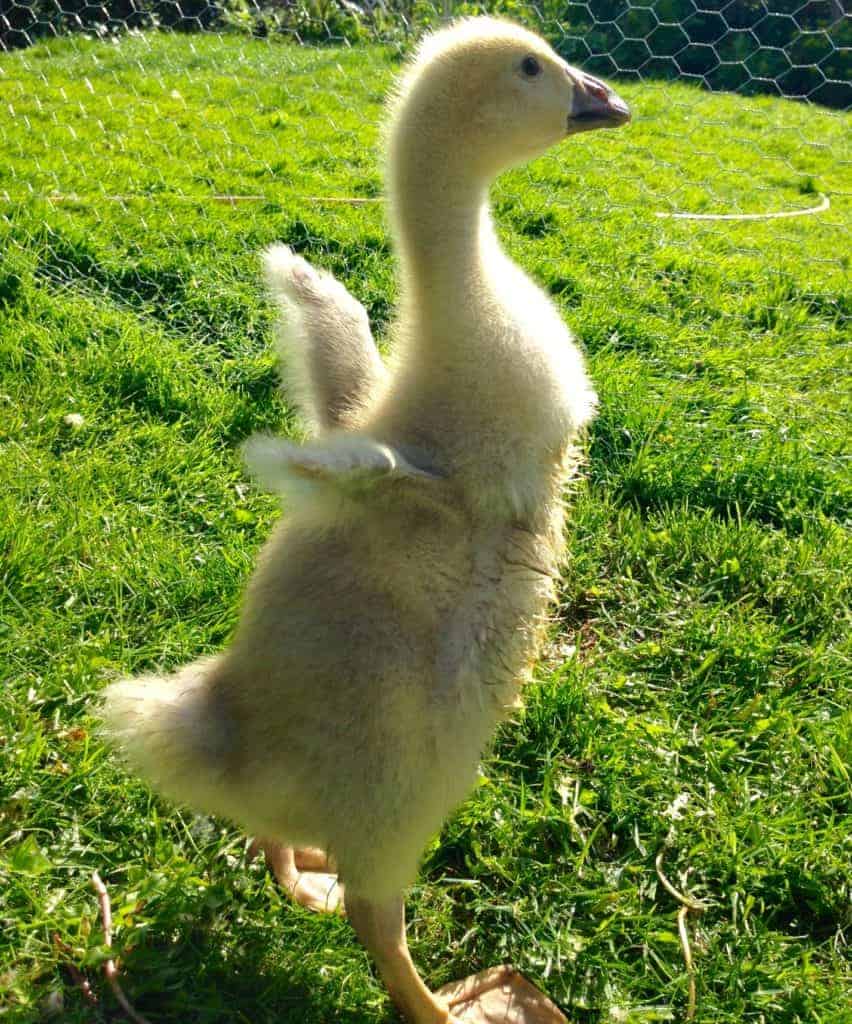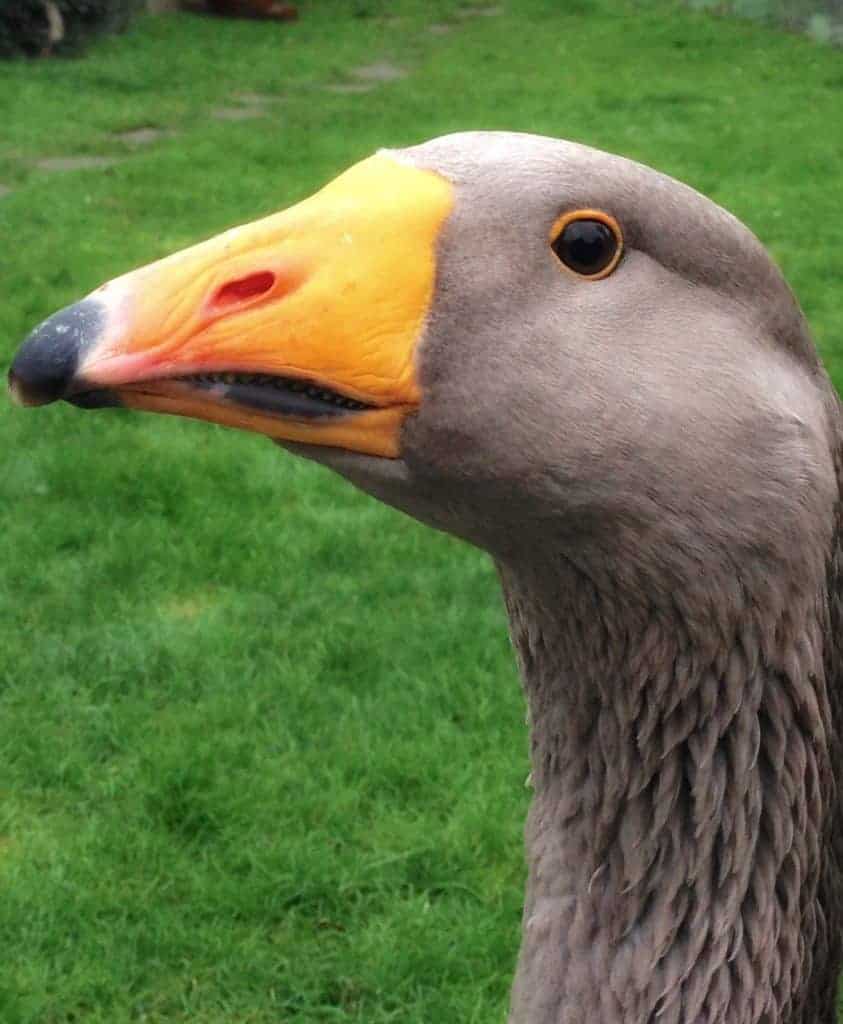Steinbacher Goose

Originating from the area of Thuringia (in the former East Germany) the Steinbacher is said to be descended from a cross between the native geese and Chinese Geese. They are also thought to be descendants of the Russian fighting geese, which arrived in Germany just before the Second World War. Crossings produced from domesticated Greylag types and Chinese Geese today often produce birds resembling the Steinbacher.


Light breed
Domesticated Greylag Goose Anser anser x Swan Goose Anser cygnoides
Steinbacher Geese were first imported to the UK in the late 1980s and early 90s. Since then there have been several more importations to reinvigorate the native stock. They did not appear in the UK standards until 1997. In the UK, the weight range for the Steinbacher is 5–7 kg, although in Germany it is slightly heavier. The first imports were most certainly a lighter type of goose, subsequent imports have been on the heavier side.
This breed has a very calm, confident nature which makes them a particularly friendly breed. Birds that have human contact from an early age become particularly tame. In the breeding season their fighting goose history may become apparent if they come into contact with more quarrelsome breeds, such as the Chinese.

With a strong convex head and bill, long straight neck, deep broad body and beautiful blue colour, the Steinbacher is a very distinctive breed. The bill has a black bean and the edge of the upper and lower mandible is edged in black (sometimes referred to as ‘lipstick’). Steinbacher exist in grey and blue (this can vary in colour depending on whether the birds are heterozygous or homozygous). Unlike other blue breeds of poultry, the Steinbacher will breed true.
In the past, other colours such as buff and cream have appeared but they have not been seen for several years. Steinbacher’s are long lived and birds reaching into their late teens is not uncommon.
Steinbachers are best kept in breeding pairs, rather than flock mated. Although not monogamous, they do form particularly strong pair bonds. Females are very capable of sitting on and hatching their own eggs and both the male and female make very attentive parents. When the goslings hatch, they look greenish in colour with dark brown legs and bill which changes as they mature.
The number of eggs produced varies from strain to strain, but between 10 and 25 eggs is all that can be expected from an individual goose. It is most likely to be the lower number. The female has a particularly short breeding life as they lay very little beyond about six years old.
Although much admired, Steinbachers are destined to remain relatively rare – probably due to their restricted breeding potential.
Share this page